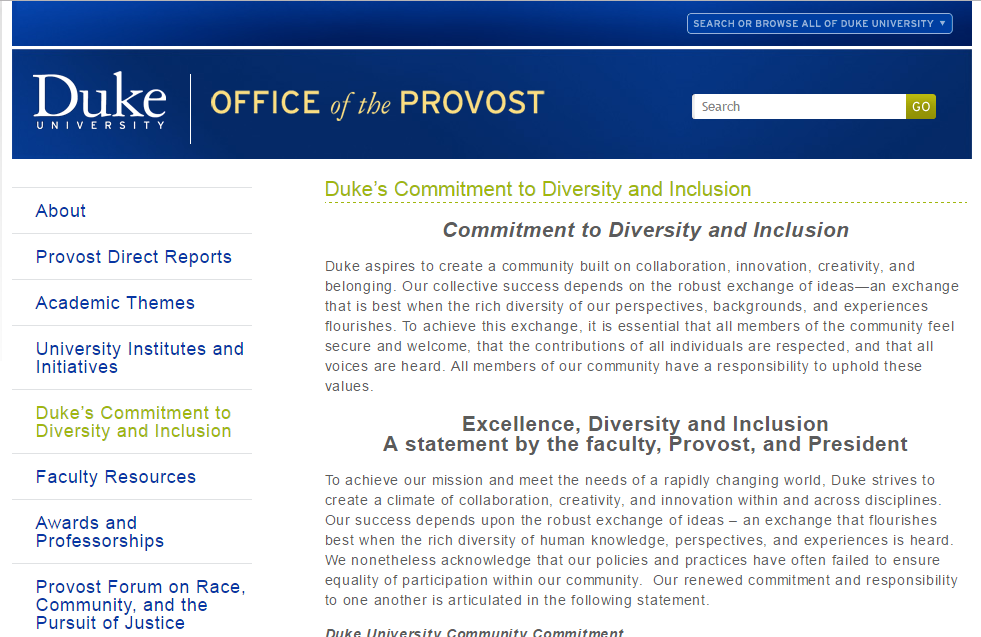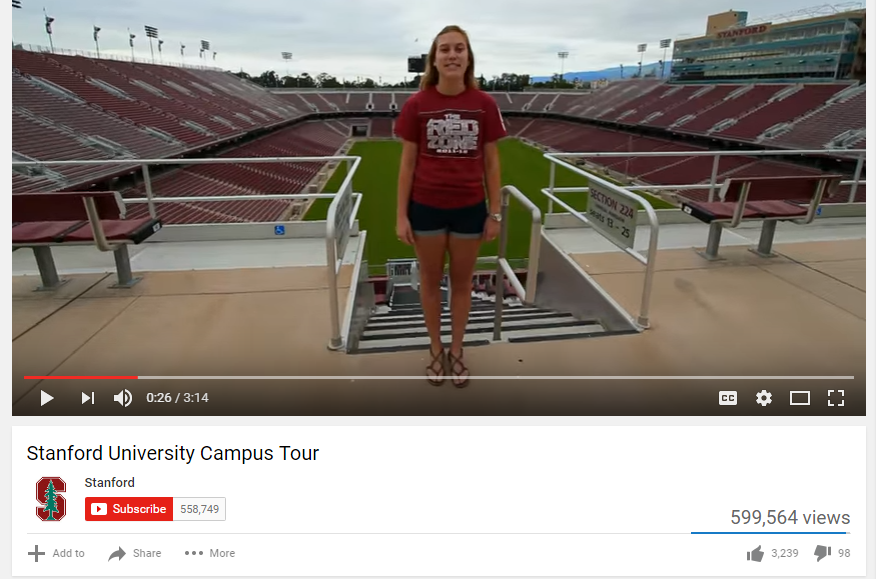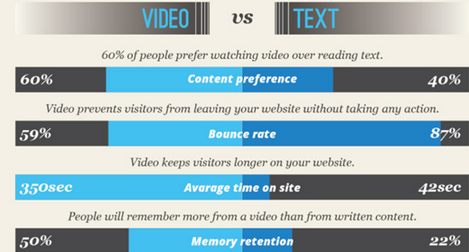About a year ago we shared a blog post with some great tips about getting your college started on Google+ for its student recruitment opportunities. At that time, surveys showed only 9 percent of college admissions officers had embraced the search engine giant’s social media platform and it seems as if several schools still need more reasons to create a Google+ page. With resources already stretched trying to manage Facebook, Twitter and LinkedIn accounts, it is understandable that schools may feel inclined to wait and see whether it’s necessary to add yet another social channel to their marketing mix. This may also be due to the fact that Google+ is a social media platform that is still significantly misunderstood.
If your higher education marketing team decides to make the leap, you shouldn’t expect to immediately reap the same number of likes, shares or high engagement as you receive on Twitter or Facebook. While it may seem like most people don’t actually use Google+, it can’t be ignored that it ranks second among all social platforms with over 540 million active users, just behind Facebook, with an estimated 20 percent self-identified as “students”. Its audience consists of a young, search and tech-savvy demographic and the concise interactivity of its interface is arguably more easily scanned for relevant content than other platforms.
 Considering Google’s worldwide reach in all things online, any involvement with their various services tends to have subtle but profound implications for marketing performance. Their +1 button is shown on 5 billion web pages every day! Even if users aren’t sharing, following and +1’ing, they still influence and are influenced by the ever more intricate algorithms that form the backbone of SEO. The effect of following other users functions similarly to email exchanges on Gmail – people in your network appear higher in your Google search results. Sites on Google+ tend to be indexed quickly for SEO and +1 links may rank higher. Anyone who follows your account or is even logged into a Google account are more likely to see your shared posts.
Considering Google’s worldwide reach in all things online, any involvement with their various services tends to have subtle but profound implications for marketing performance. Their +1 button is shown on 5 billion web pages every day! Even if users aren’t sharing, following and +1’ing, they still influence and are influenced by the ever more intricate algorithms that form the backbone of SEO. The effect of following other users functions similarly to email exchanges on Gmail – people in your network appear higher in your Google search results. Sites on Google+ tend to be indexed quickly for SEO and +1 links may rank higher. Anyone who follows your account or is even logged into a Google account are more likely to see your shared posts.
A recent research report by Searchmetrics revealed that seven of the top eight factors correlated to SEO ranking related to social sharing, with Google +1 leading the way.
Of course, relevant content is vital for sustained interaction and so segmenting your various connections into Circles allows you to filter information accordingly. Google+ Circles makes it easier for users to protect their privacy and for segmented sharing by giving you the choice of which circle you wish to deliver and receive content from. For example, prospective students may create a “college choices” circle to follow schools they’re interested in while universities could create separate circles for prospective and current students (in different programs), alumni and admissions staff to share content of exclusive interest to a specific group. Admissions hangouts and application data could push away current students but relevant campus events and opportunities can encourage their engagement. Google+ Communities are another useful resource for networking with like-minded professionals.
Hangouts permit typical social media chat interaction with your network but also real-time conferencing possibilities that can be leveraged by admissions departments. For instance, admissions counsellors could lead virtual college fairs simply by scheduling hangouts and being open to student questions, stating: “X College is hanging out. Ask questions about the admissions process!” Facilitating forums for new students to meet each other before arrival on campus can make their transition easier while establishing future engagement with the school. Chats are also an effective method for alleviating concerns of parents and for creating virtual visits for international students and prospects.
Google+ launched Google Hangouts, a multi-person video chat platform, in the summer of 2011 and Hangouts On Air, a public video streaming service, a year later. Duke University participated in the trial process, streaming eight different Google Hangout On Air sessions where current students discussed themes such as academics, student research or sports, as prospective students watched and asked questions. “We heard feedback from students who later enrolled that the video chats made campus more accessible. They were able to ask questions to the students that they wouldn’t necessarily ask an admissions officer,” says Cara Rousseau, social media manager at Duke University. “Students who became freshman at Duke said it did influence their decision.”
Duke continues to be a leader in Google+ integration with frequent hangouts on subjects of interest to future prospects and students in general. Duke University Student Chat does a great job in leveraging student-generated content.
 Many schools understand that videos are an excellent method for increasing engagement and improving SEO but are unsure how to efficiently exploit this resource. Video content created with Hangouts can afterwards be added to your website, allowing you to have different videos for different sections of your Admission page:
Many schools understand that videos are an excellent method for increasing engagement and improving SEO but are unsure how to efficiently exploit this resource. Video content created with Hangouts can afterwards be added to your website, allowing you to have different videos for different sections of your Admission page:
- Financial Aid and Scholarships
- How to apply
- FAQ Admissions
- Housing and Residential Life
- Meet your Admissions Counsellors
Need more reasons for video creation?
Google+ Hashtags
Google recently announced that Google+ posts that include hashtags are now directly searchable. Read our previous blog for more detailed advice about integrating hashtags into Google+ marketing to better manage your online communications. For example, with Google Hangouts On Air Colorado State University admissions ambassadors and other professionals from the campus answer questions and concerns from prospects and future students. To ask their questions, prospects can use Twitter, G+, Facebook or email and include the hashtag #RamChat or #FutureRam.
Practical Tips for Google+
1. Develop a comprehensive profile: Complete your user profile with information relevant to potential students to make a positive first impression and gain maximum exposure. Keep your branding consistent and ensure that the Gmail address used is exclusively for institutional purposes.
2. Consistent interaction: Proactively share interesting, funny and important content that is more likely to be re-shared. Excessive sharing of content that doesn’t generate further interaction can reduce subscribers and potentially harm SEO rankings. That said, scheduling regular postings on Google+ builds credibility and exposure over time, establishing a presence in the minds of prospects and their parents. Provoke interest, sharing and interaction by adding calls to action, asking questions, and conversing with those who have added comments. Take some time to scan posts, comment on relevant content and add thought leadership to the posts of regular contributors.
3. Optimize keyword integration: Identify the top keyword phrases used to find your school in searches and find pieces of content that relate to each of these target audiences. Add relevant links and keywords in each post to improve SEO for higher education. You can search these keyword phrases in your Google+ account, with better context from your search results by toggling between various Circles (All, Friends, Family, Acquaintances and Following).
4. Expand your online community: It takes some time to improve the relevance of content that shows up on your Google+ account but this effort can pay off in the long run. Seek out people and pages that could bring future leads and follow them. Identify intriguing communities in the same way, beginning by following three that have potential leads. By gradually delving into content provided by this network, adding valuable comments when applicable, +1’ing relevant posts and interacting further with regular contributors, you may position yourself as a thought leader while promoting lead generation.
How has your school used Google+?



 Source
Source



